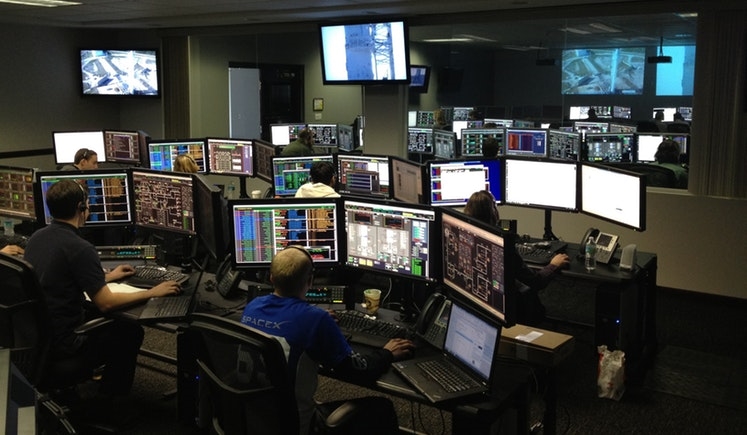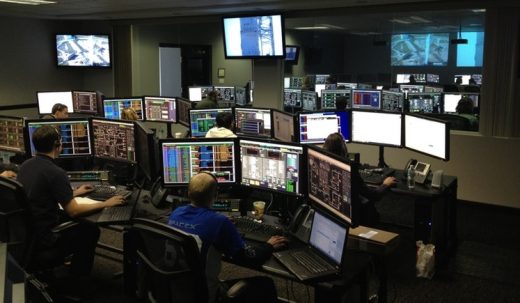IoT And the Transformation of the Modern Workplace
IoT and the Transformation of the Modern Workplace

In the 1990s and early-2000s, computers changed offices and how they functioned. Suddenly the desk phone was no longer the only access point employees had to the outside world. A computer appeared on everyone’s desks, and the entire approach to sales, marketing, and customer service changed.
Here we are in 2019, and the IoT is causing new reverberations and shifts that will shape the business world for years to come. Some even say it has the potential to create more of an impact than the personal computer.
The Breadth of the IoT
Whether we’re aware of it or not, we all have a significant level of intimacy with the IoT. The average American consumer has 13 connected devices in his ownership – including smartphones, tablets, computers, wearable devices, TVs, security systems, etc.
By 2020, Cisco is estimating that the global quantum of IoT devices will reach 50 billion. By 2030, the IoT will create as much as $15 trillion in worldwide GDP growth – the equivalent of the entire Chinese economy.
We can’t even wrap our heads around how influential the IoT is in our own personal lives – so we certainly aren’t aware of how it’s impacting larger global trends – including the modern workplace. But while we may not be capable of accurately predicting specific numbers and trends, we can be sure of one thing: The IoT is here to stay. And if the IoT is sticking around for the long haul, it’ll continue to fundamentally alter and transform the modern workplace.
The Growth of Remote Working
Remote working is no longer taboo or out of the ordinary. We all know a handful of people who work from home or only commute into the office a couple of days per week. As a matter of fact, you probably have remote working flexibility opportunities of your own. But this is just the beginning. Cisco believes that more than half of a company’s full-time workforce will be working remotely by 2020. And it’s no coincidence that this is the same year that IoT devices presumably scale up to 50 billion in number.
The IoT makes remote working possible. Connected devices, combined with cloud internet access, allows for people to work from anywhere with any device and accomplish the same work that they could undertake in a traditional office setting. For better or worse, it’s rendering the typical office obsolete as an organizational epicenter.
Many employees and professionals are opting to work from home. Recent reports show that more than 5 percent of the American workforce, or 8 million people, are now working full-time from home. That may not sound like a lot, but consider that just 3.3 percent were working from home at the turn of the century. Millions of Americans have made the shift in the last decade and a half, which is highly reflective of the growth in connected devices.
But not everyone has the ability or desire to work from home. This creates a need for something in between a traditional office and a home office – a place where professionals can gather together, collaborate, and/or independently tackle work projects. Over the past few years, coworking spaces have emerged to fill this void. As the IoT continues to grow up, coworking spaces will play an increasingly important role in the American business world. In fact, some small businesses might even ditch their offices altogether and meet at coworking spaces daily.
“As commercial real estate property values continue to skyrocket, coworking spaces will continue to provide a financial advantage for small businesses,” Novel Coworking explains. “Not only can coworking spaces provide all the same amenities and benefits of traditional office spaces, but they even offer some unique advantages over traditional offices, such as the promise of collaboration and unique networking events.”
While advances in technology have catalyzed the shift towards remote working, it’s ultimately these other factors that will excite and motivate businesses and their employees. Remote working is cost-effective, more efficient, more fulfilling, and far more practical than having hundreds of individuals cooped up in a central location that’s insulated from the outside world. As more people recognize this, remote working will continue to grow.
Changing Schedules
The IoT isn’t just changing how and where we work – it’s also leading to shifts in when we work.
For better or worse, the 9-to-5 is dead. Sure, there are still plenty of people who work standard 40-hour workweeks or have jobs that employ standard eight-hour shifts, but they’re becoming more rare.
As businesses shift to account for remote working, so do the expectations and demands. Companies care about output, profitability, and brand image. And they’re finding that employees who work on their own terms are more likely to work when they’re productive. So instead of having a bunch of groggy employees clocking in early in the morning, businesses let their team members use flex scheduling to work when they’re most efficient and productive (within reason, of course).
This can, however, create challenges. For global companies – or organizations who have employees working remotely all over the world – time-zones can be tricky to manage. Businesses have to be smart about how they handle this issue.
“We have two offices on opposite coasts and multiple remote workers,” says Micah Johnson of GoFanbase. “Whenever we bring on new people, we make sure that we’re very clear with the team about where they are located and the time zone they are working in. We also have their location stored in an employee database that anyone can look up. This makes scheduling and assigning tasks much smoother since the team knows when other members will be working.”
It’s little nuances like these that can’t be accounted for until businesses actually make the shift to new scheduling trends. But thankfully IoT devices and connected platforms allow for rather seamless communication in spite of these issues.
Automation for the Win
From a business ownership and management perspective, the IoT’s most promising impact could ultimately be experienced through automation and technology that allows businesses to streamline tasks that have traditionally been performed on a manual basis.
Most are aware of how automation is impacting industrial businesses and manufacturing companies, but it doesn’t stop there. Connected devices are creating opportunities in plenty of other spaces. The IoT and ecommerce, for example, are currently on a collision course.
As ecommerce companies are able to automate certain core tasks and processes, they’re able to better educate consumers, enhance cyber security, personalize shopping experiences, streamline the checkout process, enhance logistics and inventory through smart shelving, leverage beacons, establish demand-aware warehouses, and improve maintenance and warranties related to their products.
But then there’s the employee perspective, which is noticeably more trepid and less bullish on the idea of automation in the workplace. For years, people have been fearful that the rise of artificial intelligence (AI) and robots will make certain jobs obsolete. And they’re right to be fearful – to a degree.
The truth is that highly trained and educated individuals don’t have much to worry about. There will always be a role for them. Unfortunately, it’s people on the lower end of the job market that will be impacted the most.
“Automation is likely to replace half of all low-skilled jobs,” says Michael Hicks, director of the Center for Business and Economic Research. “Communities where people have lower levels of educational attainment and lower incomes are the most vulnerable to automation. Considerable labor market turbulence is likely in the coming generation.”
Within the next two decades, it’s entirely possible that we’ll see the modern workplace be restructured from the top-down. You’ll have a handful of business executives and leaders at the top, a few skilled workers in the middle who oversee and monitor the company’s technology, and robots, AI, and automated solutions at the bottom rungs of the corporate ladder. And for better or worse, the IoT will be responsible for this tidal wave of change.
Proactively Preparing for Change
Far too many businesses, executives, and employees are bracing themselves for significant shifts at the hands of the growing IoT sector. But this is the wrong approach. People need to be proactively preparing for change – not bracing for impact.
Whether you like it or not, the future of work will look far different than the present. Nothing is certain, except for the fact that the business world will be characterized by change and uncertainty for decades to come. Everything from how we work and where we work to when we work and who’s doing the working is up for discussion. Some of the change will be good, while other changes will be met with resistance. That’s just how these things go.
Instead of being blindsided by IoT transformation, you can get ahead of the curve and prepare. If you put yourself in a position where you’re educated on the issues at hand and have skills that are indispensable, you’ll do fine. That’s an oversimplified way of viewing the situation, but in a world of advanced technology, it’s often the simplest approaches that work best.
The post IoT And the Transformation of the Modern Workplace appeared first on ReadWrite.
(19)


